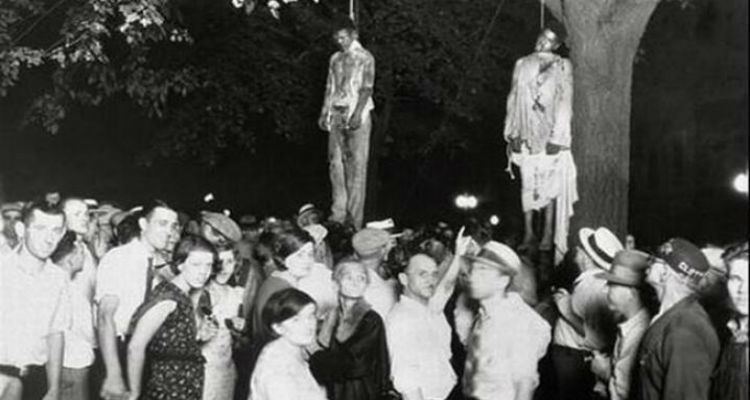Name Lynching Thomas | ||
 | ||
J. Thomas Shipp and Abraham S. Smith were young African American men who were lynched on August 7, 1930, in Marion, Indiana, after being taken from jail and beaten by a mob. They had been arrested that night as suspects in a robbery, murder and rape case. A third African American suspect, 16-year-old James Cameron, had also been arrested and narrowly escaped being killed by the mob; he was helped by the intervention of an unknown woman and returned to jail. He was later convicted and sentenced as an accessory before the fact. After dedicating his life to civil rights activism, in 1991 he was pardoned by the state of Indiana.
Contents

The local chapter of the NAACP and the State's Attorney General struggled to indict some of the lynch mob, but no one was ever charged for the murders of Shipp and Smith, nor the attack on Cameron.
Incident
The three suspects had been arrested the night before, charged with robbing and murdering a factory worker, Claude Deeter, and raping his girlfriend, Mary Ball, who was with him at the time.
A large crowd broke into the jail with sledgehammers, pulled out the three suspects, beating them and hanging them. When Abram Smith tried to free himself from the noose as his body was hauled up, he was lowered and men broke his arms to prevent any other efforts to free himself. Police officers in the crowd cooperated in the lynching. A third person, 16-year-old James Cameron, narrowly escaped death after being strung up, thanks to an unidentified woman who said that the youth had nothing to do with the rape or murder. A local studio photographer, Lawrence Beitler, took a photograph of the dead men hanging from a tree surrounded by the large lynch mob; it included women and children. He sold thousands of copies of the photograph in the next ten days.
Mary Ball later testified that she had not been raped. According to Cameron's 1982 memoir, the police had originally accused all three men of murder and rape. After the lynchings, and Mary Ball's testimony, the rape charge was dropped. James Cameron stated in interviews that Shipp and Smith had, in fact, shot and killed Claude Deeter.
James Cameron was tried in 1931 as an accessory before the fact, convicted and sentenced to state prison for several years. After being released on parole, he moved to Detroit, worked and went to college. In the 1940s he worked in Indiana as a civil rights activist and headed a state agency for equal rights. In the 1950s he moved to Wisconsin. There in 1988 he founded America's Black Holocaust Museum, for African-American history.
Mrs. Flossie Bailey, a local NAACP official, and the State Attorney General worked to gain indictments against leaders of the mob in the lynchings, but were unsuccessful. No one was ever charged in the murders of Shipp and Smith, nor the assault on Cameron.
